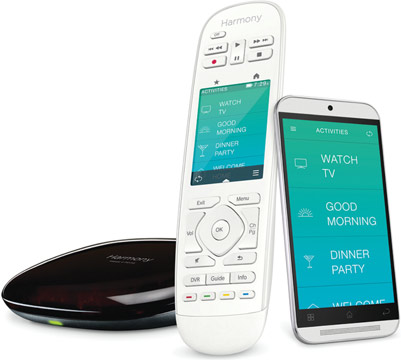
By Bill Stoller, Contributing Editor
Tech50+ (www.tech50plus.com)
At Tech 50+, we get a lot of questions about how to connect up your home to create the so-called Smart Home or make use of the Internet of Things (IoT) such as: “Do I really want to do this?”, “How easy is it?” and “What do I need?
It’s come a long way
In the early days of connectivity, things ran through your electrical wiring using fairly complex systems with standards like Zigbee and Z-Wave. Now Amazon, Apple, Google – and new players Samsung and LG – have jumped in, creating easier to use ecosystems. Amazon is the big dog with a combination of hardware like Echo and Dot, and the Alexa operating system – which has spawned hundreds of companies creating Alexa enabled or Alexa connected devices. Apple’s HomeKit solution is software based, but some manufacturers are supporting it. Google has come a bit late to the party with its Google Home smart speaker and Google Assistant software. For awhile it looked like this could be a battle, but now the big three are starting to cooperate, so at some point the Apple, Amazon, and Google enabled products may all work together.
Logitech connects
Logitech has developed products that work with the Amazon Alexa platform. I’ve been trying out several – principally their Harmony Elite universal remote control – which like other “universal” remote controls promises to combine all your remotes in one device. Unlike some of those earlier universals, where you had to keep telling it which device you wanted to control, the Harmony Elite allows you to program all sort of devices into it, using a smartphone app or an account on your computer.
Instead of having to teach your “universal” that you have a Sony TV, a cable company supplied Motorola DVR, and a Denon receiver, all wired up and set for the right input, with the Harmony Elite, you could group them as an “Activity” and turn on all three with one command, including selecting the correct receiver input. The Elite’s volume and channel controls figure out which device you want to be controlled.
And that’s just the start. Using Logitech’s POP Smart Buttons – which can control enabled lights and blinds – you could use the Harmony remote to dim the lights at night, or close the blinds on a hot summer afternoon. Make an “Activity,” say, Watch TV Daytime and you have the system darken the room, turn on the TV, cable box, audio system, and even start with a favorite channel.
Other “Activities” could be setting the mood with lighting and a Sonos music system, or creating a wake-up activity that opens the blinds and adjusts the Nest thermostat. You get the idea.
The Harmony can also be linked with Amazon’s Alexa devices. For example, you can add the Harmony “skill” to Alexa, and by telling it you want to “Watch TV” Alexa orders the Harmony Hub controller to turn on or off what you programmed. (Harmony also works with Google Assistant, but I didn’t try it.)
The reality
The reason I said “imperfect” harmony earlier, is that, first of all, getting all this to work is frankly, work.
Take the Harmony Elite, by itself. The controller needs to be placed in the room where all devices are likely to receive its IR or Bluetooth signals, as well as it getting on your Wi-Fi so you can program it from your phone or computer, and plugged in. The remote has a charging base, another power plug. You’ll need to download the app, create a Logitech account (unless you already have one), then manually enter the make and model of your TV, DVR, Blu-ray, Roku, audio receiver, etc., so you get the exact list of controls for each in the remote. If any of your devices are behind cabinet doors, you’ll need IR extenders.
Next you have to test each device and use the app to combine them into “Activities” and test each of those. I’m not saying it’s tough, but it takes time.
Add Alexa (I presume it’ll be similar with Google Assistant), and there’s more to do, like adding the Harmony “skill” and correctly configuring the Groups, Devices, and Scenes, as Alexa calls them, to work on your voice command.
I got Alexa to turn on my TV and cable together, but she refused to change channels or the volume. I’m sure there’s a fix, but I’m happy grabbing my remote. Some Harmony Elite functions also had issues – I couldn’t scroll up and down the touch screen with the physical keys or press the physical “OK” button to do anything, I had to touch the screen. I’m sure I can find the fix. Like just about everything else these days, the Harmony comes with a basic printed setup guide; all other questions are answered online.
The Harmony Elite remote kit is under $270 at Amazon, which also sells the Logitech POP Smart Button starter kit for under $60.
Bill Stoller is a veteran of more than 25 years in broadcast journalism, as an anchor, reporter, editor & writer at ABC Radio News, NBC Radio News, and numerous New York City area radio stations including WINS & WCBS. He wrote, co-produced & voiced a daily health-science-technology feature at ABC Radio News, was a technology reporter for a syndicated news service and one of the first on-air reporter/anchors at Bloomberg Radio. His company, WCH Computer Services, LLC., advises small businesses in the New York City area, and is a nationwide reseller of email security, archiving & encryption services.